=> click on the thumbnail image to see the original larger image <=
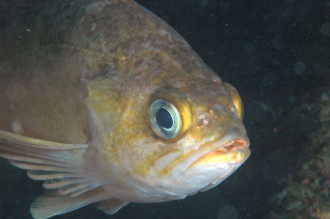
Kelp rockfish Sebastes atrovirens
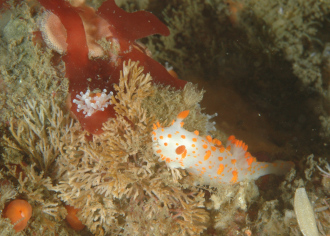
Triopha catalinae nudibranch
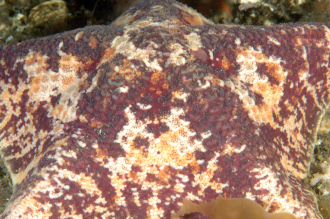
Bat star Asterina miniata
I love the variegated colors on these stars
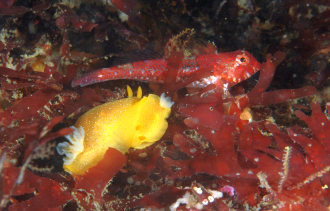
mating Doriopsilla albopunctata nudibranchs
with snubnose sculpin Orthonopias triacis
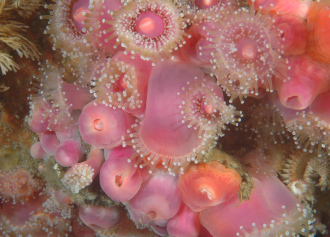
Strawberry anemones Corynactis californica
very common; I love their vivid colors
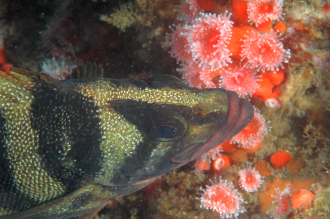
Treefish Sebastes serriceps
over strawberry anemones
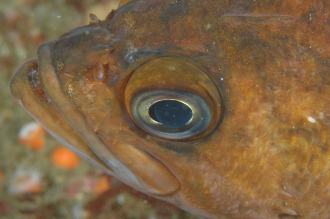
This kelp rockfish Sebastes atrovirens
was circling in front of me
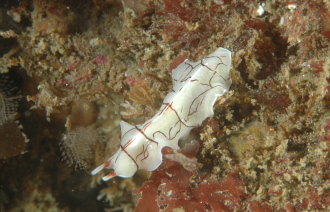
flatworm Eurylepta californica
I've never seen this one before... it's a platyhelminth or flatworm, having no respiratory or circulatory system. This worm is a carnivore, out hunting small animals to eat. Given its bold appearance, it must taste bad, with its coloration being a warning to prospective predators.
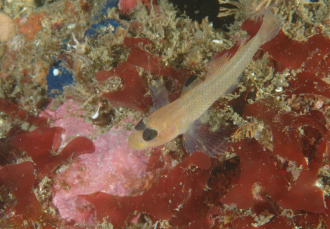
Blackeye goby Rhinogobiops nicholsii
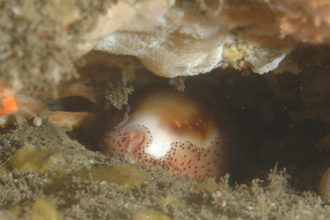
Chestnut cowrie Cypraea spadicea
deep in a crack, next to a rock scallop
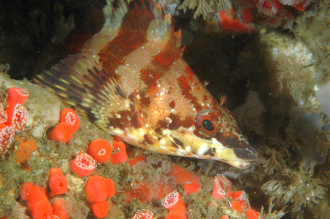
Painted greenling Oxylebius pictus over strawberry anemones
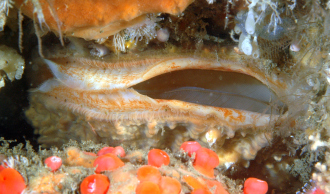
Rock scallop Crassadoma giganteus deep in a crack
You can see its numerous blue eyes along its sensory tentacles & inside is its gill which filters phytoplankton food out of seawater.
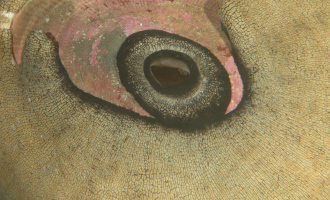
Closeup of mantle and siphon of giant keyhole limpet Megathura crenulata
Hemocyanin obtained from these snails is "used as a hapten carrier protein to enhance antigen-specific T cell priming and is known to stimulate a CD4+ T-cell response. Hemocyanins stimulate Th1 reactions without known side effects, which make them ideal for long-term continuous treatment of cancer." from Sigma Aldrich website
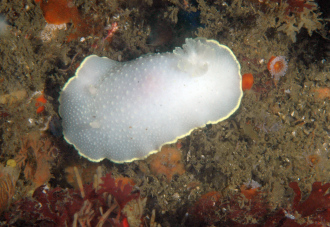
Cadlina luteomarginata nudibranch
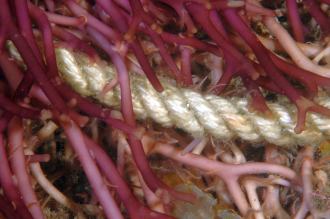
holdfast of giant kelp Macrocystis pyrifera
growing over lost rope, & sheltering brittle sea stars (that's their spiny arms)
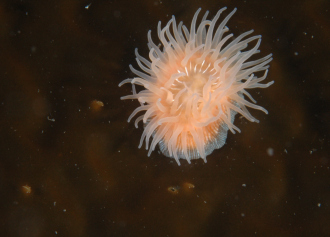
Proliferating anemone Epiactis prolifera
on blade of bull kelp Nereocystis luetkeana
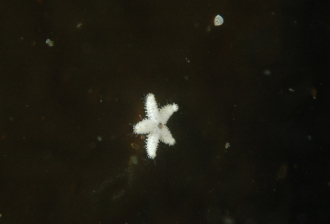
juvenile seastar
on blade of bull kelp Nereocystis luetkeana
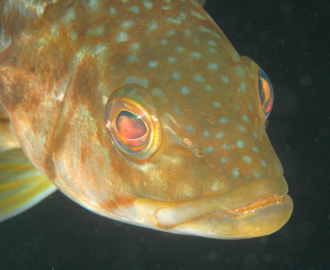
Kelp bass Paralabrax clathratus
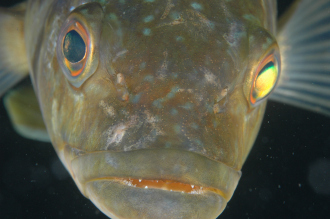
Kelp bass Paralabrax clathratus
staring down the camera